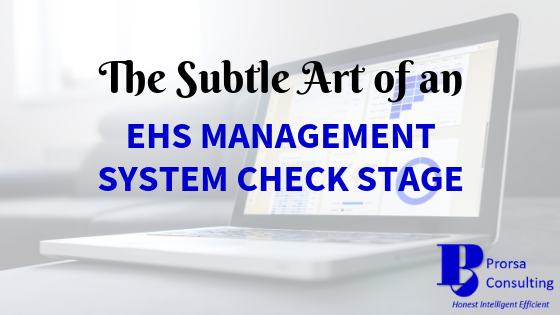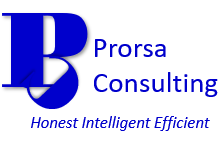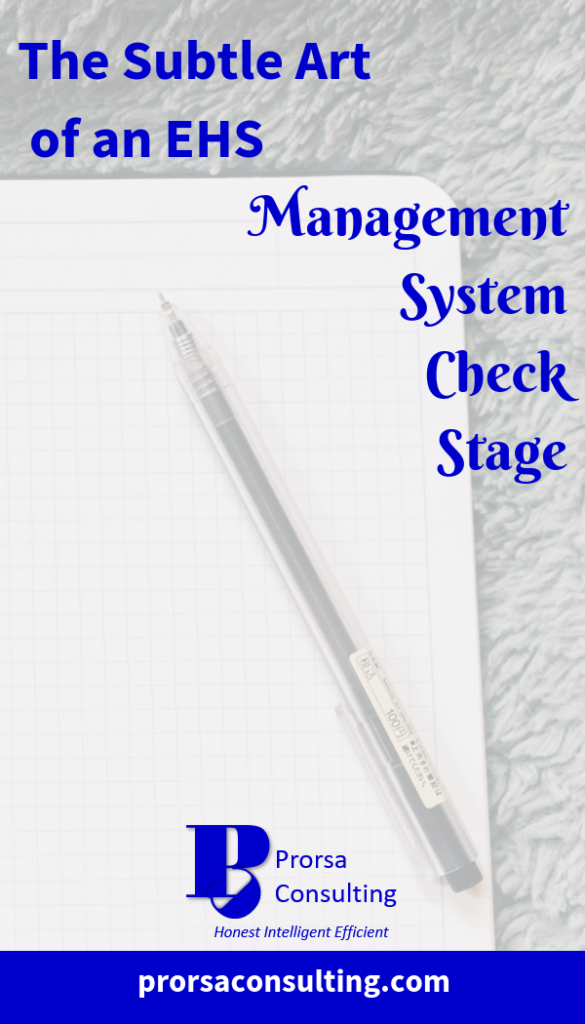The Subtle Art of an EHS Management System Check Stage
By : Admin -

The Check stage of any Environmental, Health, and Safety (EHS) Management System verifies the system runs as expected and identifies items in need of correction. As such, it fulfills the role of a physician by providing diagnoses that point the way to improvement in system health.
As in our previous discussions of executing effective planning for implementation and effecting the Do stage activities, system checking works in concert with all the other stages. So, let’s further investigate below the activities involved with an EHS Management System Check stage.
Note: ISO 14001:2015 (Environmental Management) has been utilized as a guide for the listed check stage activities. Nevertheless, the ISO 45001:2018 framework addressing Occupational Health and Safety Management largely aligns with the elements discussed here.
Disclaimer: Please be aware that this blog post may contain affiliate links and any purchases made through such links will result in a small commission for Prorsa Consulting (at no extra cost for you). Feel free to visit our Disclosure of Material Connection page for more information.
EHS Management System Check Stage: Conducting monitoring and measurement of activities and assessing and evaluating performance
Take a moment a think about all those processes you developed during the Do stage. Now ask yourself . . . How do you know those processes are working as intended? You know because you monitor, measure, assess, and evaluate.
The collection of data drives this EHS Management System Check stage activity. However, organizations must devise strategies to effectively collect and appraise pertinent information concerning their processes.
Who is going to monitor and/or measure a particular process? What steps are involved in the monitoring and measurement? In what format will the data be collected? How will the data be evaluated and by whom? What will be the frequency of the data assessments?
These questions need addressing during this Check stage activity.
As in other areas of the EHS Management System, how you will conduct monitoring, measurement, assessment, and evaluation of activities should be documented in some manner. This allows for duplication in the methods.
When dealing with data collection and appraisal, method duplication allows for like comparisons. Nothing will derail this Check stage activity faster than having inconsistent data due to different methods of monitoring, measurement, assessment, and/or evaluation for the same metric.
Where to begin with monitoring, measurement, assessment, and evaluation
So, how do you start? Begin with the processes possessing data collection and appraisal components as requirements. Processes created around regulatory requirements usually have some sort of monitoring/measurement and assessment/evaluation component. This data collection and appraisal usually forms the basis for reporting to the Agency.
For other processes that are not mandated by regulation, organizations need to determine which metrics will be value-added and/or measure overall success. For example, your organization may choose an objective of increasing the number of Job Safety Analyses (JSAs) completed with a target of a 10% increase.
In this case, you collect data on the number of completed JSAs and assess against previous performance. However, information, such as the types of tasks for which JSAs are completed, the frequency of JSA completion, and the job positions completing the most JSAs also may be value-added data for future improvement opportunities.
EHS Management System Check Stage: Performing an internal audit of the management system
The management system internal audits arguably serve as the white blood cells of the system. The internal audit identifies and helps start the process of mitigating nonconformances from the system’s standard. Left unchecked these nonconformances would act much like an illness within the system, eventually affecting the system’s ability to truly thrive.
Unlike compliance auditing, which we will cover in the next section, the system internal audit does not focus on uncovering potential regulatory violations. Rather, it functions to provide the organization with the information needed to direct corrective actions and continuous improvement efforts.
Internal auditors must maintain a sense of objectivity and impartiality. They must have functional knowledge of the system’s basis standard and possess the ability to evaluate and document nonconformities. Furthermore, internal auditors should work with system owners to suggest viable corrective actions when warranted.
This EHS Management System Check stage activity should adhere to a documented process. During the process design, you should decide on an internal audit frequency suiting the organization’s needs. Nevertheless, an internal audit frequency of at least once annually is advisable.
The results of internal audits must also be recorded. Both the documented process and audit results should be maintained under the organization’s framework to manage documented information established during the Plan stage.
Starting points for management system internal auditing
Dive into establishing your internal audit program by determining the who, what, when, and how associated with internal audits. This information will form the basis for the documented process.
As with other activities developed during the EHS Management System Check stage, a checklist or protocol will help to standardize the look and feel of the collected results. Additionally, start devising a strategy to make proper training available for internal auditors.
EHS Management System Check Stage: Auditing against your legal obligations
Ensuring compliance remains one of the most important parts of any organization’s EHS program. So, it should come as no surprise that checking for compliance with legal obligations would be part of the EHS Management System Check stage.
Effective compliance auditing entails periodic, comprehensive reviews of performance against the EHS regulations applicable to a facility. Usually, this involves the use of a standardized protocol, which may or may not include the assignment of a performance score.
EHS regulations and the ISO Standards expect correction of any instances of noncompliance found during auditing. The nature and scope of some noncompliance items discovered during an audit may warrant consultation with the Agency to reach a suitable resolution.
Where to start with legal obligations auditing
Organizations should utilize the legal requirements identified during the Plan stage as the basis for a standardized compliance auditing protocol. Additionally, you should establish a documented process outlining how compliance auditing and follow-up on noncompliance items will take place.
Be sure to address the who and when within the compliance auditing process. Moreover, the documented process and results of compliance audits should be included in the organization’s established framework to manage documented information.
EHS Management System Check Stage: Conducting a management review
Last but not least, the ISO Standards set the expectation that top management will review EHS Management System performance. This is an essential function of top management within an EHS Management System.
Management review should include the good, bad, and ugly when it comes to system performance. The review should not function just to herald success. It also should address corrections for failures and provide top-level guidance on continuous improvement initiatives.
With regard to content, looking at compliance and internal audit results, any complaints received, progress on objectives & targets, and the status of open corrective actions are necessary. However, these only scratch the surface.
In order to truly drive improvement, top management also should revisit additional system aspects during management review, such as:
- Suitability
- Alignment
- Effectiveness
- Adequacy
- Communication
- Resources
- Potential Changes
Moreover, organizations must document management reviews, including any decisions made on improvement actions and/or changes. Again, this documentation should reside within the established framework for documented information.
Getting going with management review
Just like the other EHS Management Check stage activities discussed here, companies should define a documented process for conducting a management review. You also may find that a management review checklist would prove helpful.
Management review requires data consolidation from numerous sources. Facilitators must think about the format of the data presented. The information should be in-depth enough to provide the data necessary for top management to make informed decisions while respecting the participants’ time.
Final Thoughts
The EHS Management System Check stage helps organizations gauge the health of their systems. By implementing the aforementioned Check stage activities, you will collect the data and perform the appraisal needed to make system course corrections. Moreover, implementing this stage will provide the basis for continuous improvement and lead to better overall EHS performance.
Prorsa Consulting can assist with your environmental, health, & safety management system needs. Check out the Services page for more information. You can contact us via contact@prorsaconsulting.com with any questions about our services.
We encourage your feedback on this blog’s content. If you found this information useful, be sure to like and/or share below. You can also give us your feedback via our Contact Us page.
Be sure to follow Prorsa Consulting on Google+, LinkedIn, Pinterest, and Twitter!
Want more? If you are seriously considering implementing an ISO-compliant Environmental Management System, then you need a copy of the requirements and more in-depth guidance for use. Well, it just so happens that such a document meeting these two needs already exists. Check out ISO 14001:2015, Third Edition: Environmental management systems – Requirements with guidance for use to move forward in your management system implementation endeavor today!


